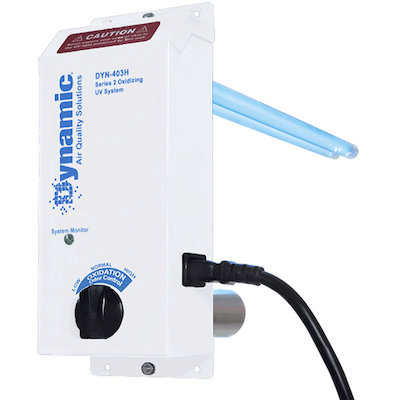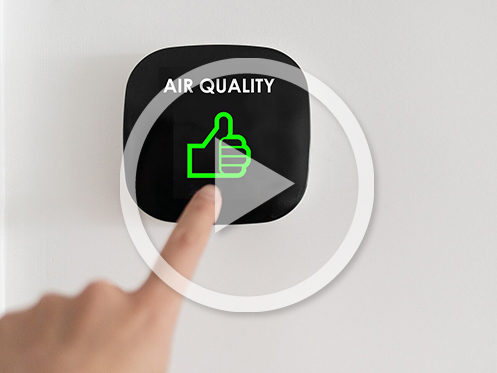Updated January 23, 2024
A comfortable home isn’t just about the perfect temperature—it’s also about making sure your home is free of harmful allergens and contaminants. Houses are high-traffic zones with people constantly coming and going. Every time we enter our homes, tiny particles of allergens attached to our clothes and skin go inside too.
The introduction of outdoor allergens mixes with indoor allergens like pet dander, dust mites, mold, and other particles. Over time, our indoor air quality can take a significant hit. The EPA has stated that indoor air can be 2-5x dirtier than outdoor air depending on the area.
We’ll go over the top 6 causes of poor indoor air quality, how they affect you, and what you can do to reduce their impact:
- Smoke
- Toiletries
- Furniture and Flooring
- Humidity Problems
- Dirty AC Filters
- Dusty Home
Want to improve your indoor air quality?
Contact Golden Rule at 515-393-4526! Our experienced air quality technicians have installed dehumidifiers and air purifiers for hundreds of Des Moines Metro homeowners. We’re ready to provide you with high-quality same-day service.
Smoke
Smoke in regard to indoor air quality covers more than just cigarette smoke. If you frequently use your fireplace, wood stove, gas stove, candles, or incense, the smoke from these activities will affect your air quality and might require you to replace your AC air filters often.
Fireplaces, wood stoves, and gas stoves are all sources of indoor air pollutants. Wood smoke can release contaminants into the air that causes respiratory problems down the line, especially if your home is well insulated and tightly sealed.
Gas fireplaces and gas stoves both release gas byproducts such as carbon monoxide and nitrogen dioxide. Even small amounts of carbon monoxide can lead to fatigue, dizziness, disorientation, and headaches. Meanwhile, trace amounts of nitrogen dioxide can lead to itchy eyes, irritated noses, sore throats, and shortness of breath. It’s harmful to household members with asthma or sensitive respiratory tracts.
If your household feels disoriented or itchy often, it could be that your home has too many gas byproducts in the air.
You can keep your family comfortable and safe from smoke by:
- Installing a high-efficiency particulate (HEPA) air filter into your HVAC system as they are designed to trap particles the same size as smoke
- Opening the doors and windows when burning anything
- Replacing an older gas stove with a safer model
- Maintaining a carbon monoxide detector
- Using the correct fireplace fuel (e.g., harder woods like maple, ash, oak, and beech to burn cleaner and hotter)
- Regularly cleaning your fireplace while also checking for circulation and ventilation problems
- Getting an air quality monitor
Toiletries
Many common bathroom toiletries can affect your indoor air quality, such as soaps, shampoos, lotions, styling products, and deodorants. These can release volatile organic compounds (VOCs) into the air, which are chemicals emitted by household materials. VOCs are present in almost all indoor air and are typically harmless. Some VOCs have a strong smell and can cause headaches, dizziness, nausea, and throat irritation.
You can avoid harmful VOCs in your toiletries by:
- Not buying products with synthetic fragrances
- Not buying aerosol products like hairspray and spray deodorant
- Not buying solvent products like traditional nail polish and remover
Also, you can install a UV light air purifier and activated carbon filter to treat both the VOCs in your air and remove the odor. UV lights can remove volatile organic compounds but cannot remove odors, and vice versa.
Furniture and Flooring
Formaldehyde is a type of VOC and can be emitted by medium-density fibreboard furniture and cabinets or memory foam mattresses. Homeowners can also find it in plywood or laminate flooring and some upholstered furniture and carpets.
If you’re unsure about whether your home contains formaldehyde and don’t want to replace your furniture, flooring, or mattress with natural or organic versions, install a UV light air purifier to trap the volatile organic compounds in the air.
Humidity Problems
A humid environment is perfect for helping dust mites and mold thrive. Keeping humidity levels at around 30-50% prevents allergens from getting out of control. However, Iowa summers are incredibly humid and can reach 70%. Mold starts growing when humidity is at 60%.
The best ways to combat high humidity levels are to install a dehumidifier to reduce moisture and to change out your AC air filters to reduce your indoor pollen count.
Learn more in our blog, How to Improve Allergy Symptoms in Iowa.
Dirty AC Filters
A dirty air filter forces your AC to use more energy due to restricted airflow. Worse, they’ll allow dust and other allergens to circulate throughout your home. It’s best to change your air filters regularly to increase your AC’s energy efficiency and block allergens.
Here are a few guidelines to help you gauge how often you need to change your filter:
- Change every 2 months if you have a pet or frequently burn candles
- Change every month if you have more than one pet or a household member has allergies
If you do not fit the above criteria, you can change your air filter every 3 months or whenever you notice that it’s dirty. When you schedule an HVAC system check, your technician will typically replace the air filter for you.
Dusty Home
A leading cause of poor indoor air quality is dust mites or pet dander. They can be found lingering in your bedding, cushions, and curtains. These allergens can irritate your nose and throat, leaving you tired and lethargic.
Remove dust mites from your home by vacuuming, mopping, dusting, and cleaning weekly. You’ll have to clean your home more often to remove the pet dander clinging to surfaces if you have pets.
A home dustier than normal could also indicate that you need to change your AC filter.
Only mop or vacuum when cleaning your home if you have a HEPA filter in your HVAC system. Without one, you could be recirculating dust particles throughout your home while cleaning floors.
Contact Us Today for Indoor Air Quality Service!
If you found this post helpful, learn more about indoor air quality:


Shine a Light on Cleaner Living: The Dynamic Germicidal UVC Lamp Review Have you ever wondered about the unseen invaders lurking in your home? Well, fear not,... Read More

Breathe Easy: 5 Strategies to Improve Indoor Air Quality in Your Home Hey there, homeowner! Are you tired of feeling like you’re breathing in a cloud of... Read More

As a homeowner, ensuring optimal comfort in your living space is paramount. Your HVAC (Heating, Ventilation, and Air Conditioning) system is crucial in maintaining the desired temperature... Read More